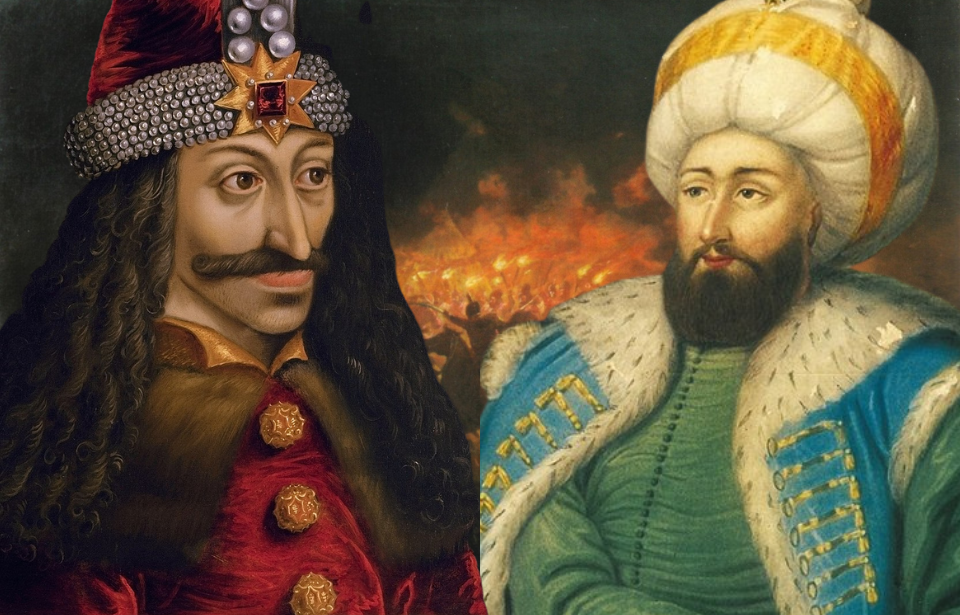Written by Barney Higgins.
Mehmed II, better known as Mehmed the Conqueror, was one of the greatest military commanders of his day. In the middle of the 15th century, the sultan had set his sights on the coast of the Black Sea. However, the region was, at the time, under the control of Vlad the Impaler, who launched a night attack against Mehmed II, to prevent him from taking the land from him.
Vlad the Impaler
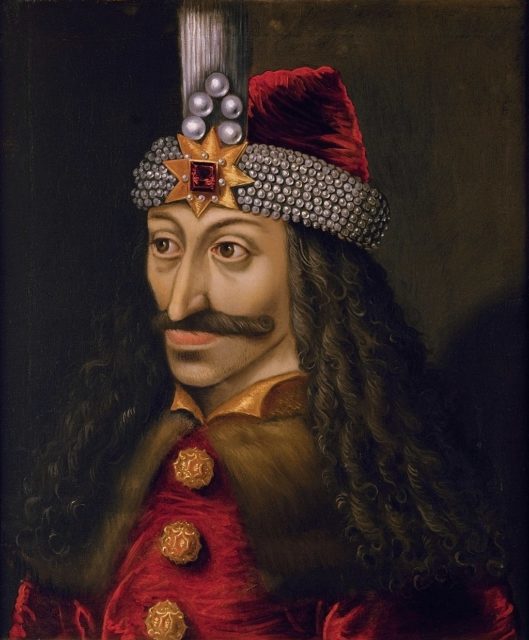
Wallachia had long been pushed and pulled between the Ottoman Empire and the Kingdom of Hungary, with both attempting to control the throne, extort tributes and set up puppet governments. In 1456, the control of the throne had been taken by one who wouldn’t be a puppet to either. His desire was for his country to maintain its independence, but his hatred for the Ottoman Turks was boundless and terrifying. The king of Hungary respected him, and that respect was grudgingly returned.
This man was Vlad III, whom they called Dracul after the Order of the Dragon of which his father had been a member. To history, he was better known as Vlad the Impaler. He was a ruthless, cruel and feared individual who was merciless in his methods, driven and extremely intelligent. He was also prone to fierce fits of rage during which none could reason with him.
Vlad’s hatred of the Ottomans was well-known, as was the story behind it, but the deeper reasons always remained dark. Close to nobody, he didn’t speak of his childhood or the trauma that had twisted him into who he’d become.
Nobody knew quite what had happened, but all were aware Vlad had spent his formative years as a hostage of the court of the Ottoman Sultan, along with his brother, Radu. While the latter had thrived, converted to Islam and been given command of troops in the Sultan’s army, Vlad had developed a hatred of the Ottomans, which bordered on madness.
Mehmed II travels to confront the Wallachian leader
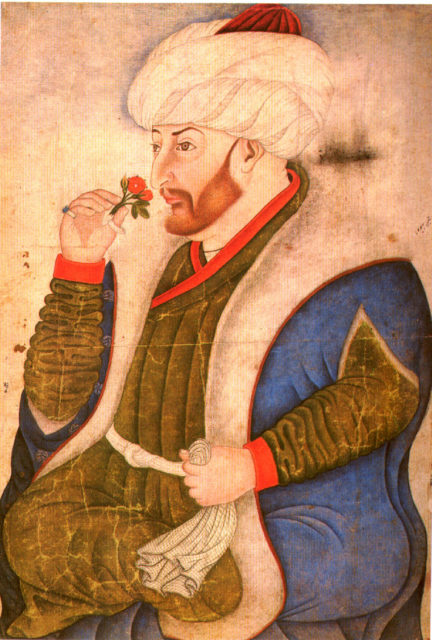
When Vlad the Impaler regained the throne of Wallachia, the Ottoman Sultan sent envoys to him, ordering him to pay a tribute to the Empire. Vlad not only refused, but killed the envoys, ordering that long nails be driven through their skulls, into their brains. Mehmed II, who was engaged in a siege at the city of Corinth, sent his general, Hamza Bey, to deal with the Wallachian leader.
Vlad ambushed Hamza and captured him and most of his men. Mehmed II abandoned his siege and marched in haste toward the Danube, the great river that marked the Western border between Wallachia and the Ottoman Empire. Vlad went to meet him.
When Mehmed II arrived west of the Danube, he found the land devastated. Villages and towns had been burned, fields torched and wells poisoned. Everywhere he went, he found the horrible evidence of Vlad’s presence. Around the burnt husks of villages and along the lengths of empty road were wooden stakes. On each was the body of a person.
The Sultan’s troops marched toward the Danube sick with horror. The corpses were bad enough, but, here and there, a stronger person had been set up on a spike in such a way as to not be outright killed. These poor individuals croaked and gurgled at the passing soldiers, and Mehmed II ordered them killed with arrows in mercy. He was cold with fury.
Vlad’s army contested the river, but was outnumbered. After a fierce exchange, they retreated, allowing the Sultan to cross in force. They were headed for the Wallachian capital by the fastest road, but it was a march of some days. As they advanced, they found that Vlad had turned his viciousness against his own people and land, so as to deprive Mehmed II’s forces of supplies.
Vlad the Impaler prepares for his night attack
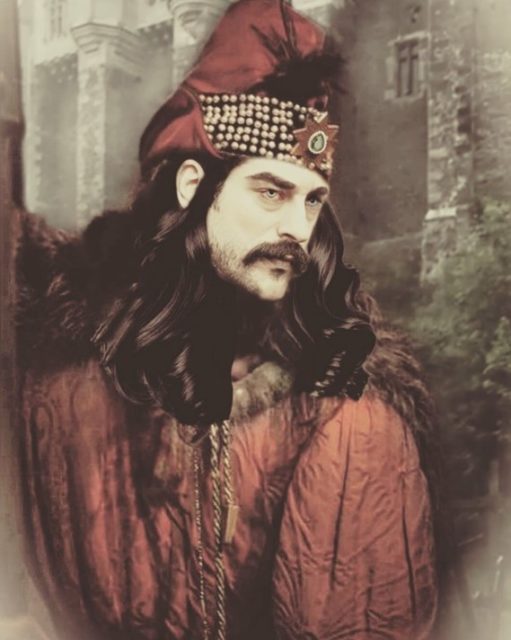
On June 17, 1452, still days out from the Wallachian capital, Mehmed II set up camp. It was a splendid sight: huge and colourful, with rows of white tents stretching into the distance and banners flying proudly. There was music, the smell of roasting meat and a haze of smoke from countless little charcoal braziers. At the heart of it was his great tent and pavilion, intricately woven with decorations of gold and red.
The sultan planned to rest his force for one day and night before pressing on. During the early afternoon, a stocky little man with a high turban and heavy black mustache slipped into the camp. He was dressed like a member of the Turkish landed knights, the Sipahi, and spoke in a fluent, unaccented Turkish. As a result, no one questioned his presence.
The man moved through the camp, exploring and taking careful note of everything: stabling for the horses and camels, wagons of supplies, the Janissaries and the Sipahis. By the end of the afternoon, he stood in front of Mehmed II’s tent. He carefully traced his way back to the main gate, before slipping out of the camp.
The King of Wallachia used his knowledge of Ottoman language and culture to spy on the enemy camp for himself. The risk appealed to him, and Vlad the Impaler planned to use his knowledge to launch a night attack directly on the sultan.
Vlad the Impaler launches his night attack
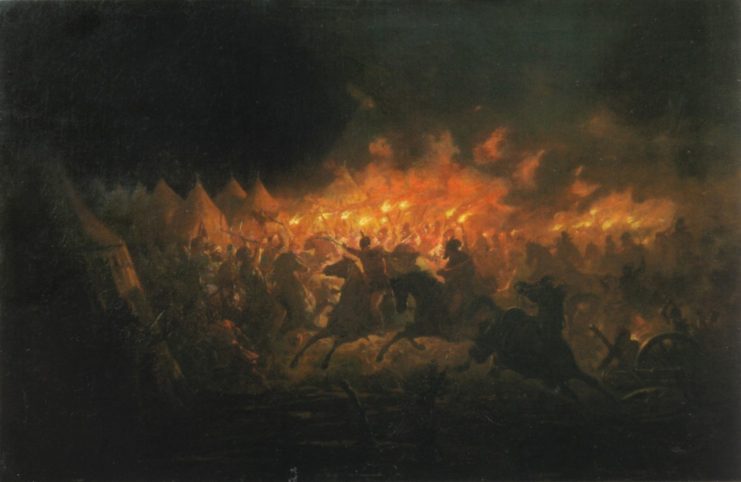
Just before midnight, Vlad the Impaler rode boldly up to the gate of the Ottoman camp. In perfect Turkish, he ordered the guard to open it. In the dark, he and a picked body of horsemen flowed in. Their secrecy held long enough that most of his soldiers were inside before the alarm was raised.
Chaos ensued, flaming torches held high over the the Wallachian forces who tore through the camp. They pushed against the horses and camels, killing many, and set fire to tents and wagons. Vlad and his personal bodyguard drove against Mehmed II’s tent, but found it empty. They set fire to its opulent fabric and rode back toward the gates in wrath.
By this time, the Ottoman commanders had managed to achieve some order in the chaotic camp. Resistance was beginning to strengthen, forcing Vlad to sound the retreat. In the night, their torches streamed behind them as they thundered away, leaving death and destruction in their wake.
Aftermath of the failed night attack
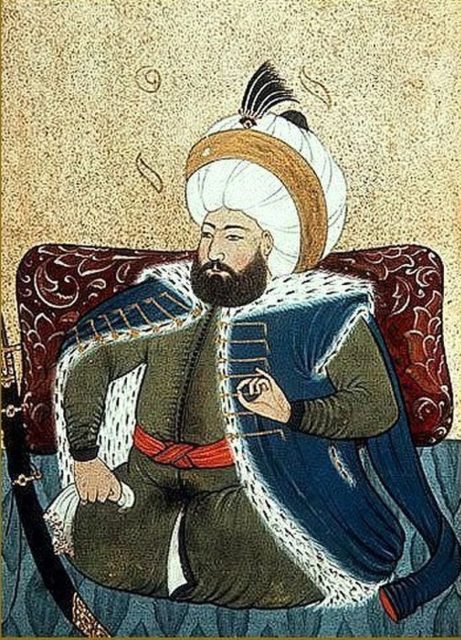
Vlad the Impaler’s night attack had failed to kill Mehmed II, but many thousands of Ottoman sultan’s men lost their lives in the confusion, as did his horses and camels.
More from us: The True Story Behind ‘Medieval’ and Legendary Bohemian Commander Jan Žižka
The war between Vlad and Mehmed II continued to rage back and forth in Wallachia for 10 years. Eventually, the former was killed, likely in battle against the Ottomans. His reputation for extreme cruelty has lasted into modern times, becoming the inspiration for the character of the Count in Bram Stoker’s popular 1897 novel, Dracula.
